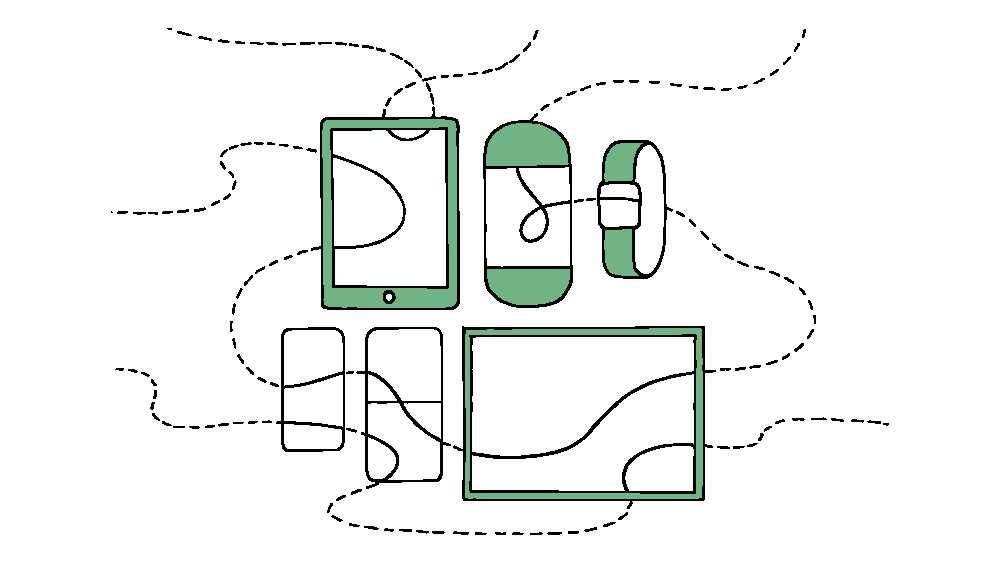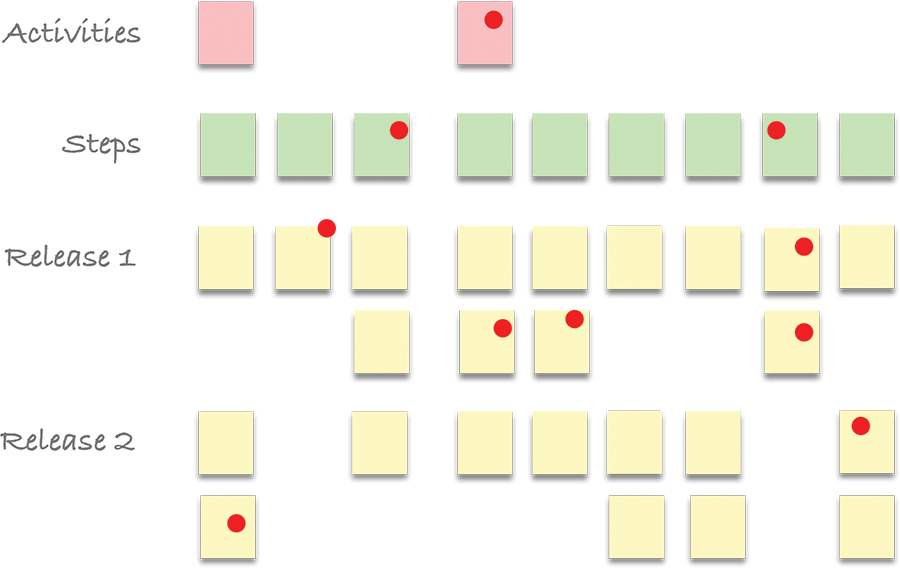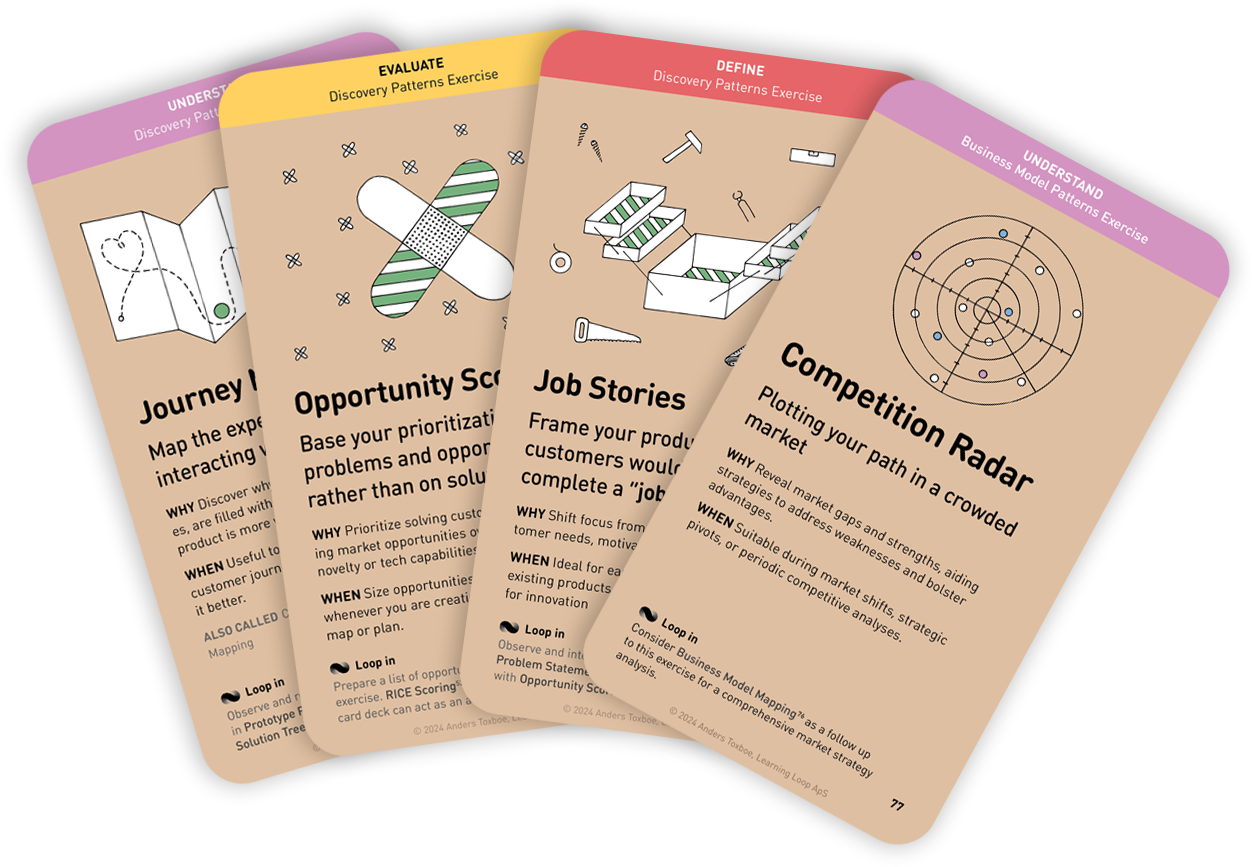Workshop Exercises: Understand
User Story Assumptions Mapping
Discover critical assumptions by visualizing the user journey

Why: Collaborate to identify feature gaps, prioritize releases, and slice out a learning strategy
When: Use to define or refine user experiences and discovery research gaps by bridging the work of cross functional teams
This exercise builds on the foundational practice of User Story Mapping by adding a layer of critical thinking focused on assumptions. This exercise not only helps teams visualize and organize the user journey but also surfaces hidden assumptions that could impact the success of the project. By identifying, prioritizing, and testing these assumptions, teams can reduce risks early in the development process and make more informed decisions about which features to develop next.
Mapping out the full user journey enables teams to gain clarity on how various user stories fit together. When breaking down stories into tasks, it becomes easier to identify where the team is assuming user behavior, preferences, or needs without concrete validation. This structured process provides the right context for critical thinking about assumptions, as teams move beyond simply listing features to questioning the validity of each user story.
User Story Mapping helps teams slice out features that align with both business goals and user needs. This naturally leads to discussions about what the team already knows versus what they are assuming about the user. By linking features to business outcomes, the exercise encourages teams to question whether those assumptions align with real user behavior or simply internal beliefs, which can be harmful if left untested.
Focus on learning and validation
The addition of assumptions mapping to traditional User Story Mapping is powerful because it brings a continuous learning mindset to product development. It ensures that before diving into full-scale implementation, the team first focuses on validating the most critical assumptions. This reduces the likelihood of spending time and resources on features or tasks that do not add value or are based on incorrect assumptions.
The dual slicing strategy—one for release and one for learning—is a critical part of this exercise. While the release strategy focuses on delivering user value quickly, the learning strategy focuses on what the team needs to learn in order to build the right features in the future. Identifying the most critical assumptions and creating a plan to validate them before release helps ensure that development is informed by real user feedback, rather than guesswork.
By marking tasks with the most uncertain assumptions and prioritizing which to test first, the team shifts its focus to the areas of greatest risk. This forces the team to acknowledge what they do not know and plan experiments or research activities to validate those assumptions. The result is a more informed, data-driven approach to product development.
Why is this a good exercise to run?
By identifying and testing assumptions early in the process, teams can avoid the costly mistake of building features based on incorrect assumptions. This exercise helps prevent the scenario where a large amount of time is spent developing a feature that users don’t want or need.
With assumptions clearly identified and prioritized, decision-making becomes more informed and data-driven. Teams are less likely to make decisions based on gut feelings or internal biases and instead rely on validated learning from users.
This exercise encourages teams to always question what they think they know and validate those assumptions through research and testing. This mindset leads to more agile and adaptable development processes, as teams become more open to changing direction based on new information.
By focusing on both delivering value and learning, the exercise helps ensure that the team remains aligned around the user’s needs. This prevents feature creep or building features that are not actually important to users. It also ensures that the product team, stakeholders, and development team all have a shared understanding of the critical assumptions being made.
By helping teams identify, prioritize, and test assumptions early, User Story Assumptions Mapping reduces risk, improves decision-making, and fosters a learning-focused culture. As a result, the exercise help ensure that features and tasks are aligned with real user needs and validated insights.
Instructions for running this play
- Frame the problem that your map is going to expand so that it is clear to all participants.
- Map the BIG picture. Place red sticky notes horizontally in a logical sequence for each high-level activity within the user journey.
- Explore steps. Break down each activity into smaller steps using green sticky notes.
- Explore tasks. Further break down steps into individual user tasks with yellow sticky notes, detailing the user interaction process.
- Slice out a release strategy. Identify the smallest feature set that delivers user value and supports your release goals. This is your first release.
- Slice out a learning strategy. Go through each sticky note, placing dot stickers on those that are the most critical assumptions, yet still not certain.
- Prioritize which assumptions to test first using the Assumptions Mapping exercise.
Iterate through steps 3 to 6, refining your understanding and approach based on insights gained and feedback collected.

A collection of workshop exercises that will help you ditch dull meetings and facilitate with confidence. It will help you master the design process and have more productive time with your team. The card deck will be ready for purchase in the end of 2026 and is now undergoing rigorous testing.
Reserve your deck!- Annotate your User Story Map to Highlight Valuable Information by Patrick O'Malley
- Story Map Your Ideas to Generate Key Assumptions by Teresa Torres
